Independence Party (Iceland) facts for kids
Quick facts for kids
Independence Party
Sjálfstæðisflokkurinn
|
|
|---|---|
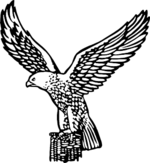 |
|
| Chairperson | Guðrún Hafsteinsdóttir |
| Vice-chairperson | Jens Garðar Helgason |
| Secretary | Vilhjálmur Árnason |
| Parliamentary group chairperson | Hildur Sverrisdóttir |
| Chief Executive | Þórður Þórarinsson |
| Founder | Jón Þorláksson Sigurður Eggerz |
| Founded | 25 May 1929 |
| Merger of | Conservative Party Liberal Party |
| Headquarters | Háaleitisbraut 1, 105 Reykjavík |
| Youth wing | Young Independents |
| Ideology |
|
| Political position | Centre-right |
| European affiliation | European People's Party (associate) |
| International affiliation | International Democracy Union |
| Nordic affiliation | Conservative Group |
| Colours | Blue |
| Seats in Parliament |
14 / 63
|
| Election symbol | |
 |
|
The Independence Party (called Sjálfstæðisflokkurinn in Icelandic) is a major political party in Iceland. It is known for its conservative ideas. Currently, it is the second-largest party in the Althing, which is Iceland's parliament. The party has 14 seats in the Althing.
The current chairperson of the party is Guðrún Hafsteinsdóttir. The vice-chairperson is Jens Garðar Helgason.
The Independence Party was formed in 1929. It was created when two older parties, the Conservative Party and the Liberal Party, joined together. These parties both wanted Iceland to become fully independent from Denmark. Iceland achieved full independence in 1944. Since it was formed, the Independence Party has usually won the most votes in elections. However, in 2009 and 2024, another party, the Social Democratic Alliance, received more votes. Many leaders of the Independence Party have also served as the Prime Minister of Iceland.
The party believes in economic freedom. This means they like the idea of private businesses and less government involvement in the economy. They are generally seen as a "centre-right" party. People who work in fishing and those with higher incomes often support the Independence Party.
Contents
History of the Independence Party
The Independence Party was officially started on May 25, 1929. It was created by combining the Conservative Party (formed in 1924) and the Liberal Party (formed in 1925). The new party took the name of an older historical Independence Party. This merger made the Independence Party a very important political force in Iceland. From its first election in 1931, it became the biggest party in the country.
In the 2007 elections, the Independence Party won more seats in the Althing. They formed a new government with the Social Democratic Alliance. However, in the 2009 elections, the party lost many seats. They went from 25 or 26 seats down to 16, becoming the second-largest party.
The Independence Party returned to government after the 2013 elections. They won 19 seats and became the largest party again. They formed a government with the Progressive Party. Later, in 2016, the Independence Party formed a government with Bright Future and Viðreisn, holding 21 seats. This government ended due to a controversy involving a minister clearing a criminal record. After the 2017 elections, the Independence Party formed a new government with the Left-Green Movement and the Progressive Party. They had 17 seats at that time.
After the 2021 election, the Independence Party continued in a government coalition. This was again with the Progressive Party and the Left-Green Movement. In April 2024, Bjarni Benediktsson, a leader from the Independence Party, became Prime Minister. Soon after, the Left-Green Movement left the government. New elections were held in November 2024. In these elections, the Independence Party had its lowest results ever. They won only 14 seats and about 19% of the votes. Despite this, they still finished second in terms of total votes and seats.
What the Party Believes In
The Independence Party is often described as conservative or liberal-conservative. This means they believe in traditional values and also in economic freedom.
The party has been the main right-leaning party in Iceland for a long time. It attracts many voters who are not socialist. The party tries to be practical rather than strictly following one set of ideas. Its name, "Independence Party," also suggests being independent of strict rules. For most of its history, the party has worked with other parties to form governments.
The Independence Party generally supports less government control over the economy. They originally believed in very limited government involvement. However, in the 1930s, they started to accept the idea of a welfare state, which means the government helps people with things like healthcare and education.
On social issues, the party is often more liberal than other similar parties in Nordic countries. For example, they strongly supported ending the ban on beer in Iceland. The ban was lifted in 1989.
How the Party is Organized and Who Supports It
The Independence Party has been very successful in Nordic countries. It has a wide range of supporters. However, it is especially popular among Iceland's large fishing community and businesses. The party gets most of its support from the South and Southwest regions of Iceland.
The party tries to appeal to all kinds of people, not just one social class. Because of this, they are quite good at getting support from working-class voters. This also comes from their strong support for Iceland's independence in the 1930s. However, most of their strength comes from the middle class. People with higher incomes and university education also tend to support the party more.
The newspaper Morgunblaðið has long supported the Independence Party. Davíð Oddsson, who was Iceland's longest-serving Prime Minister and a former leader of the Independence Party, is one of the editors of this newspaper.
The party has a history of strong individuals and different opinions within the party. Sometimes, smaller groups have left the party because they disagreed with its direction. However, these smaller groups usually did not last long.
The party has a youth group called Young Independents. This is the largest youth organization in Iceland, with over 12,000 members. This youth group is a bit more focused on classical liberal ideas than the main party.
The Independence Party has a very large number of members. About 15% of all people in Iceland are members of the party.
International Connections
For many years, the Independence Party has been a member of the International Democracy Union. This group includes other conservative parties from around the world. Some examples are the Conservative Party in Norway and the Christian Democratic Union in Germany.
In 2011, the party joined the European Conservatives and Reformists Party. This group is generally against too much power for the European Union. However, the Independence Party left this group in 2021. In September 2023, it joined the European People's Party as an associate member. This group is generally supportive of the European Union.
Election Results
| Election | Leader | Votes | % | Seats | +/– | Position | Government |
|---|---|---|---|---|---|---|---|
| 1931 | Jón Þorláksson | 16,891 | 43.82 |
15 / 42
|
New | Opposition | |
| 1933 | 17,131 | 48.01 |
20 / 42
|
Coalition | |||
| 1934 | 21,974 | 42.32 |
20 / 49
|
Opposition | |||
| 1937 | Ólafur Thors | 24,132 | 41.31 |
17 / 49
|
Opposition | ||
| 1942 (Jul) | 22,975 | 39.52 |
17 / 49
|
Minority | |||
| 1942 (Oct) | 23,001 | 38.55 |
20 / 52
|
Opposition | |||
| 1946 | 26,428 | 39.50 |
20 / 52
|
Coalition | |||
| 1949 | 28,546 | 39.53 |
19 / 52
|
Minority | |||
| 1953 | 28,738 | 37.12 |
21 / 52
|
Coalition | |||
| 1956 | 35,027 | 42.37 |
19 / 52
|
Opposition | |||
| 1959 (Jun) | 36,029 | 42.49 |
20 / 52
|
Opposition | |||
| 1959 (Oct) | 33,800 | 39.72 |
24 / 60
|
Coalition | |||
| 1963 | Bjarni Benediktsson | 37,021 | 41.43 |
24 / 60
|
Coalition | ||
| 1967 | 36,036 | 37.50 |
23 / 60
|
Coalition | |||
| 1971 | Jóhann Hafstein | 38,170 | 36.22 |
22 / 60
|
Opposition | ||
| 1974 | Geir Hallgrímsson | 48,764 | 42.73 |
25 / 60
|
Coalition | ||
| 1978 | 39,982 | 32.72 |
20 / 60
|
Opposition | |||
| 1979 | 43,838 | 35.42 |
21 / 60
|
Opposition | |||
| 1983 | 50,251 | 38.67 |
23 / 60
|
Coalition | |||
| 1987 | Þorsteinn Pálsson | 41,490 | 27.17 |
18 / 63
|
Coalition | ||
| 1991 | Davíð Oddsson | 60,836 | 38.56 |
26 / 63
|
Coalition | ||
| 1995 | 61,183 | 37.07 |
25 / 63
|
Coalition | |||
| 1999 | 67,513 | 40.74 |
26 / 63
|
Coalition | |||
| 2003 | 61,701 | 33.68 |
22 / 63
|
Coalition | |||
| 2007 | Geir Haarde | 66,754 | 36.64 |
25 / 63
|
Coalition | ||
| 2009 | Bjarni Benediktsson | 44,371 | 23.70 |
16 / 63
|
Opposition | ||
| 2013 | 50,454 | 26.70 |
19 / 63
|
Coalition | |||
| 2016 | 54,990 | 29.00 |
21 / 63
|
Coalition | |||
| 2017 | 49,543 | 25.25 |
16 / 63
|
Coalition | |||
| 2021 | 48,708 | 24.39 |
16 / 63
|
Coalition | |||
| 2024 | 41,143 | 19.36 |
14 / 63
|
Opposition |
Party Leaders
| Nº | Chairman | Took office | Left office | Duration | |
|---|---|---|---|---|---|
| 1 | 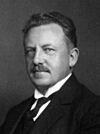 |
Jón Þorláksson (1877–1935) |
29 May 1929 | 2 October 1934 | 5 years, 4 months, 3 days (1,952 days) |
| 2 | 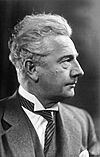 |
Ólafur Thors (1892–1964) |
2 October 1934 | 22 October 1961 | 27 years, 20 days (9,882 days) |
| 3 | 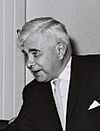 |
Bjarni Benediktsson (1908–1970) |
22 October 1961 | 10 July 1970 | 8 years, 8 months, 18 days (3,183 days) |
| 4 | 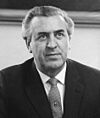 |
Jóhann Hafstein (1915–1980) |
10 July 1970 | 12 October 1973 | 3 years, 3 months, 2 days (1,190 days) |
| 5 |  |
Geir Hallgrímsson (1925–1990) |
12 October 1973 | 6 November 1983 | 10 years, 25 days (3,677 days) |
| 6 | 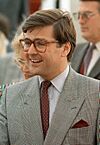 |
Þorsteinn Pálsson (born 1947) |
6 November 1983 | 10 March 1991 | 7 years, 4 months, 4 days (2,681 days) |
| 7 | 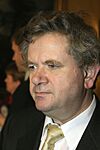 |
Davíð Oddsson (born 1948) |
10 March 1991 | 16 October 2005 | 14 years, 7 months, 6 days (5,334 days) |
| 8 | 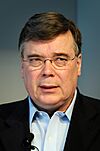 |
Geir Haarde (born 1951) |
16 October 2005 | 29 March 2009 | 3 years, 5 months, 13 days (1,260 days) |
| 9 | 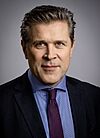 |
Bjarni Benediktsson (born 1970) |
29 March 2009 | 2 March 2025 | 15 years, 338 days (5817 days) |
| 10 | 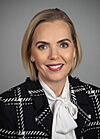 |
Guðrún Hafsteinsdóttir (born 1970) |
2 March 2025 | Present | 298 days |
See also
 In Spanish: Partido de la Independencia (Islandia) para niños
In Spanish: Partido de la Independencia (Islandia) para niños


